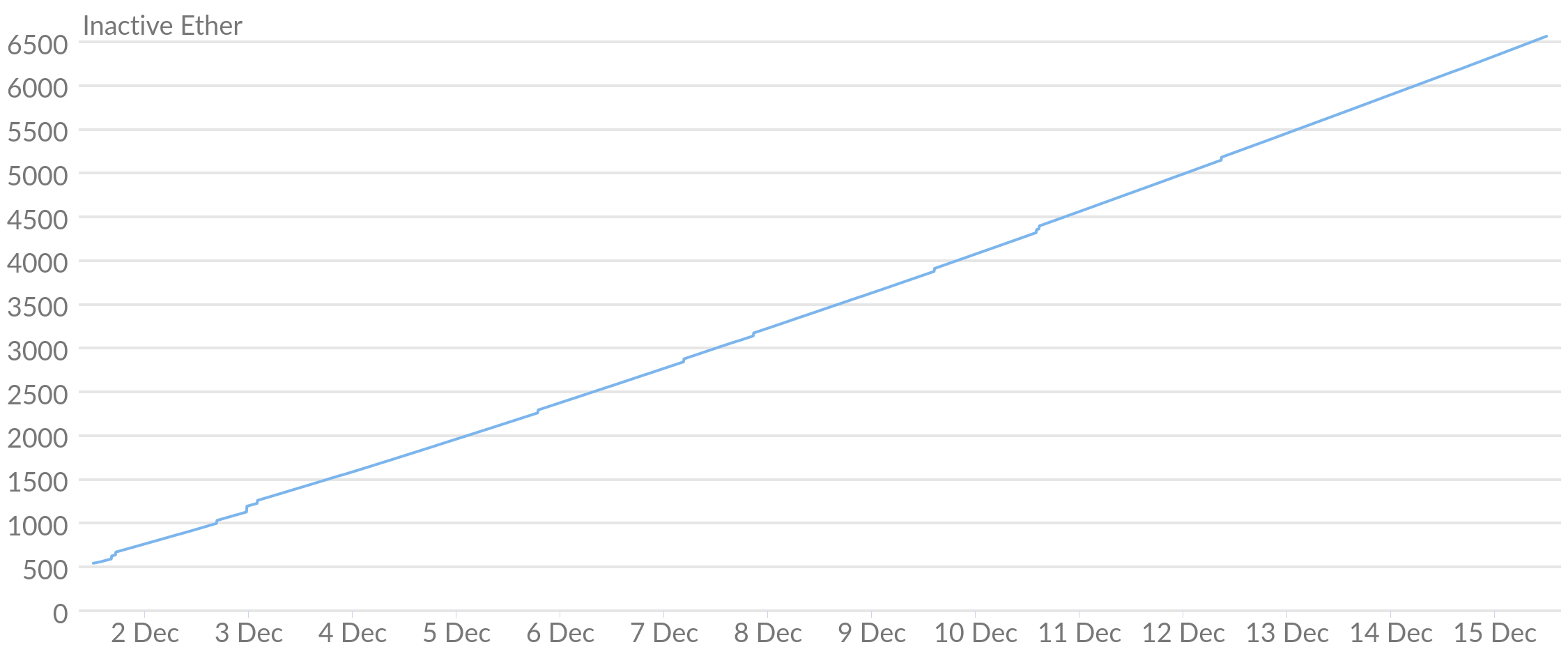Charting Inactive Ether
Ether on the beacon chain not actively participating in validating is a waste. This article charts the growth of inactive Ether in the first two weeks of the beacon chain.
A version of this article first appeared in the December edition of the Attestant Ethereum 2 update.
The ultimate purpose of Ether on the beacon chain is to provide security for the chain. Any Ether that is present on the beacon chain but not active in that role is considered wasted. There are three significant sources of inactive Ether currently present in the beacon chain:
- Ether that has been over-deposited
- Ether that has been awarded and not transferred or withdrawn
- Ether that is held by exited validators and not withdrawn
The first situation is generally due to user error. Specifically, this happens when the user deposits more than 32 Ether to a single validator, either by not fully understanding the deposit system and depositing too much in a single transaction, or submitting multiple transactions for the same validator which in aggregate exceed 32 Ether.
The second situation is a natural side-effect of attesting correctly. Rewards for attesting correctly accrue to the validator's account, where they remain until transferred or withdrawn. However, these operations do not exist at present so the rewarded Ether remains on the account but provides no additional security above the 32 Ether already present.
The third situation occurs when validators have been exited, either voluntarily by sending a suitable operation or forcibly in the case of the validator being slashed. The ultimate aim is to have the remaining Ether in these validators be available for withdrawal and subsequent re-deposit, but again due to the lack of the relevant operations this is not yet possible and so the Ether remains on the chain but plays no part in securing it.
There are two additional sources of inactive Ether worth considering. The first is Ether that has been committed but is not yet active. Although this fits a strict definition of inactive Ether, it is transient in that it is on a path that will make it active at some point in the future. The second is active validators that are not attesting, or attesting poorly. Although there is merit in this argument, it is a much more dynamic situation than the others, and attempting a clear definition for "attesting poorly" leads to qualitative discussions. Given that the participation for the beacon chain is, as of time of writing, above 99% this source is not considered significant enough to include in this analysis at the present time.
It is to be expected that inactive Ether will increase over time, because every action on the beacon chain will result in an increase in inactive Ether. Proposing a block, attesting to a proposal, slashing a validator: these all increase inactive Ether. And there are no actions that can be taken at present to decrease inactive Ether.
 Figure 1: Growth of inactive Ether in the first two weeks of the beaon chain
Figure 1: Growth of inactive Ether in the first two weeks of the beaon chain
The graph shows that inactive Ether is growing steadily due to the chain rewarding validators, and occasionally jumps due to slashed and exited validators. By the end of the second week $4MM of inactive Ether was present on the chain, showing a general linear trend of $2MM per week.
The ultimate solution lies in providing mechanisms to remove inactive Ether from the beacon chain, either permanently or so it can be returned as active Ether. The methods and processes to do this will be a large part of the work on the beacon chain in 2021 and beyond, and we look forward to reporting on progress in future articles.